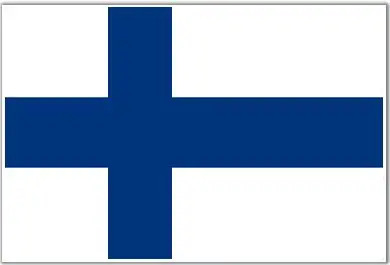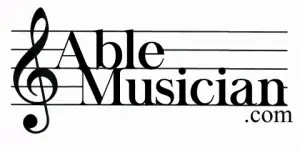The strength of Finnish music lies in its originality.
Unlike its neighbors Sweden and Norway, Finland never had a court that would have provided itself with musical entertainments or sponsored expensive opera productions.
Instead, the roots of Finnish music go deep down into a unique national heritage.

We may say without exaggeration that the national epic, the Kalevala (1835), forms the basis of all Finnish culture – including music.
Early Days
Finnish art music finds its origins in the arrival of Christian sacred music from both East and West in the 12th century.
Latin chant was taught in monasteries and used at church services.
It is not known when exactly polyphony arrived in Finland from continental Europe.
The earliest records are from the Turku region and date from the 14th century.
It is also not known whether an organ was used in Turku Cathedral in the 14th and 15th centuries.
The Ducal courts of that period (Finland being part of the Kingdom of Sweden) had occasional musical performances; there is documentation of itinerant musicians from the 15th century onward, although it is not known what instruments they played.
In the 16th century, the musical influence of the Swedish court extended to Finland, at least when members of the Royal family travelled to Turku: their entourage included a musical ensemble with up to ten members.
The first missal in Finnish was printed in the mid-16th century, and music was also distributed in hymnals (with or without printed music).
There were efforts to standardize hymns and hymn tunes in the 17th century; developments in Lutheran church music did not properly reach Finland until the early 18th century, nearly two centuries after the Reformation.
Piae Cantiones, a collection of church and school songs in Latin, was published in 1582.
Most of its 74 songs were composed in Finland; they date from 1350-1450.
The First Composers
Bourgeois musical life emerged in the late 18th century, prompting the establishment of public concerts: the Academic Capell orchestra and the Turku Musical Society (1790) were founded in Turku.
The first significant Finnish composer was Erik Tulindberg (1761-1814), whose major works are his six string quartets, written in a Haydnesque style.
Musical influences that reached Finland were mainly channelled through Sweden.
For example, Bernhard Henrik Crusell (1775-1838) was employed as a clarinettist in the Court Capell in Stockholm.
His output includes three clarinet concertos in the French style; these remain in the core repertoire for the instrument to this day.
When Finland was taken over by Russia in 1809 and created an autonomous Grand Duchy, Vyborg (Viipuri) gained importance as a centre of culture, and the new capital Helsinki also began to develop its musical life.
Many touring opera companies, mainly German, appeared in Helsinki and Vyborg and generated enthusiasm that eventually led to the German-born conductor and composer Fredrik Pacius (1809-1891), who had emigrated to Finland, writing the first Finnish opera in 1852.
His contribution to the development of Finnish music was crucial, and he has with good reason been described as the ‘father of Finnish music’.
Finland’s national anthem, Maamme (Our Land), is also by Pacius.
Birth of Institutions
It was not until the late 19th century that music began to attract the attention of the public at large.
The Kansanvalistusseura (Society for Culture and Education) was founded in 1874 to provide the entire population with opportunities for artistic pursuits and studies.
The first major musical event organized by the Society was the Jyväskylä song festival in 1881, based on the Estonian model.
The festival was a huge success, and a great many choirs were founded all around Finland.
The song festival tradition survives to this day, and Finland is justly known as a land of choirs.
Professional opera performances on a domestic basis were launched in 1873, opera having previously been performed only by touring companies and in sporadic amateur productions.
1882 was perhaps the most significant year of all in the history of Finnish music.
Firstly, it saw the founding of Ylioppilaskunnan Laulajat (Helsinki University Chorus), a Finnish-language choir balancing the largely Swedish-speaking cultural scene.
Secondly, conductor Robert Kajanus (1856-1933), determined to set up a professional orchestra, founded the Helsinki Orchestral Society (today, Helsinki Philharmonic Orchestra).
Thirdly, Martin Wegelius (1846-1906) founded the Helsinki Music Institute (today the Sibelius Academy).
Wegelius described the situation in Finland perceptively in his history of music, published in 1891: “The history of Finnish music must first be created before we can write about it.”
Most of the musically educated people of the day had studied in Germany, and accordingly they based their teaching on German influences rather than the influences of Stockholm or St. Petersburg, though these were nearer.
Sibelius Inspired by the Kalevala
The national epic, the Kalevala, was published in 1835 and caused a huge stir in artistic circles in the 1890’s.
Its significance for Finnish national self-esteem laid the foundation for the development of an indigenous culture.
In music, however, this heritage was not always used in naïve illustrations of national subjects or in the use of folk tunes per se.
When Jean Sibelius (1865-1957) was writing his tone poem Kullervo in the early 1890s, he wished to express the Finnish nature of his topic as clearly as possible: “The purely Finnish aspirations in music – I now understand them less realistically but more tangibly than before.”
He thus focused on feeling rather than realistic depiction.
One month after the premiere of Kullervo, in May 1892, Sibelius applied to the University of Helsinki for a travel grant to go to Karelia for the summer, “on both sides of the border, to visit runo singers in order to acquaint myself with their tunes and performance”.
Sibelius received the grant and a list of singers to visit.
The status of Jean Sibelius as a leading national figure remains undisputed.
His seven symphonies and Violin Concerto are internationally successful, a demonstration of Finnish cultural potential and creativity.
Composer Kalevi Aho (b. 1949) wrote: “In Germany and France in particular, Jean Sibelius is often regarded simply as a conservative National Romantic of no significance.
However, the critics voicing such opinions are not familiar enough with his output.
Around 1910, Sibelius’s music changed into a modern idiom akin to Expressionism, and in the 1920’s this in turn yielded to a universally Classical late style.
The most advanced features of Sibelius’s technique remained unknown even in Finland for several decades.”
For Finns, however, Sibelius is more important as an embodiment of the national spirit than as an internationally successful composer.
Before the advent of radio, Sibelius’s music was mainly performed in the cities.
Until the late 1920’s, the musical tastes of the public at large were much more influenced by the concerts given all around the country by Oskar Merikanto (1868-1924) – a musical factotum who was a pianist, an organist, a conductor, a composer and a critic.
He performed his own compositions and accessible foreign pieces.
To simplify things a bit, we might say that whereas Sibelius wrote upper-class music for the whole world, Merikanto was dedicated to guaranteeing the civil and human rights of art and music, so to speak, to all Finns of whatever class.
From Golden Age to conservatism
The period from the 1890’s to the 1920’s was the Golden Age of Finnish art.
1911 marked a turning point in the history of Finnish opera: a group of prominent cultural figures, including the internationally renowned prima donna of the Paris Opera, Aino Ackté (1876-1944), founded the Domestic Opera.
Ackté also founded an opera festival in the tiny town of Savonlinna in 1912, with performance staged in the courtyard of the 15th-century Olavinlinna Castle.
The festival was organized four times between 1912 and 1916 and once more in an attempt at a revival in the 1930’s.
It was not until the 1960s that the Savonlinna Opera Festival was reborn.
Aino Ackté, relying on her authority as an internationally successful singer, thus laid the foundation for the Finnish opera boom of the 1970’s and 1980’s.
Today, the Savonlinna Opera Festival is one of the world’s leading music festivals.
The 1920’s were an exciting and tortuous period.
Finland had become independent in 1917, and the young nation wished to strengthen its identity and roots.
The opera Pohjalaisia (The Ostrobothnians, 1924) by Leevi Madetoja (1887-1947) was an immense success.
It was a lightly veiled allegory about the oppression that Finland suffered under the last years of the Russian regime, and its strong national connections served to point the way for other opera composers, too, for a while.
Although Aarre Merikanto (1873-1958) had completed his opera Juha, written in the contemporary European Modernist idiom, only one year earlier, it failed to attract any interest at all.
The board of the Opera was not ready for something as apparently difficult as Merikanto’s Juha, and it was in fact not premiered on stage until 41 years later.
Today, it is regarded as the most important work in the history of Finnish opera.
It is surprising to note just how conservative the generation of composers emerging in Finland in the 1930’s was.
Whereas some 1920’s composers had explored the forefront of Modernism, their successors modelled themselves on a national conservative – Leevi Madetoja.
Only two major names emerged in the 1930’s: Uuno Klami (1900-1961), who was widely condemned for being too European, and Yrjö Kilpinen (1892-1959), who gained a reputation with his hundreds of solo songs.
Two Ways
Two different groups of composers emerged in the 1930s: one was grounded in National Romanticism, while the other was more sensitive to European developments.
The latter group – consisting mainly of Swedish-speaking composers – soon took the lead in style and technique, and by the 1940’s it was clearly more advanced.
Its most important names were Erik Bergman (b. 1911) and Einar Englund (1916-1999).
The Neo-Classical trend that began in the 1930’s continued in the 1940’s, but with a new generation: influences followed included no longer only Ravel and Stravinsky but also Shostakovich, Prokofiev, Bartók and Hindemith.
Aarre Merikanto and Uuno Klami were winding down their careers, and Joonas Kokkonen (1921-1996), Einojuhani Rautavaara (b. 1928) and Usko Meriläinen (b. 1930) were creating their early works.
With the shift to twelve-tone technique in the 1950s, many composers nevertheless retained Neo-Classical features in their idiom.
Later, Einar Englund persisted in a purely Neo-Classical style. The premieres of his first two symphonies in the late 1940’s attracted much attention, and they remain favorites in the orchestral repertoire.
In the 1950s, Finnish composers began to attend the new music summer courses in Darmstadt, and in the early 1960’s leading Central European avant-garde composers such as Stockhausen, Ligeti, Nono, Maderna, Lutoslawski and Penderecki began to visit Finland.
Many composers made their boldest break with traditional notation in the early 1960s, and it was at this point that Finnish composing techniques finally caught up with international developments.
It has often been said that the towering figure of Sibelius overshadowed Finnish composers from the 1930’s to the 1960’s.
This is partly true in terms of symphonic music.
Many composers felt it to be too much of a challenge to seek comparison with Sibelius, especially since Sibelius remained a physical presence well into the 1950’s, long after he had stopped writing music.
Sibelius was a universally respected cultural icon, but he was too idiosyncratic as a composer to prompt a school of his own.
Towards an International Standard
In the 1960s, Finnish musical life attained an international level.
Finland gradually became a unique land of music, and by the 1970’s music had become the country’s major calling card abroad.
Finnish music has experienced a unique boom, and today Finland has an exceptionally high number of significant composers and conductors.
